#norvell w. page
Explore tagged Tumblr posts
Text
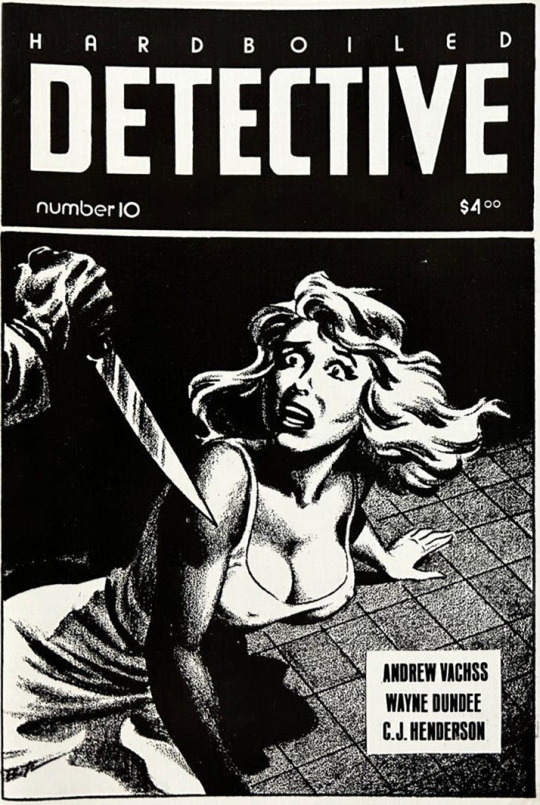

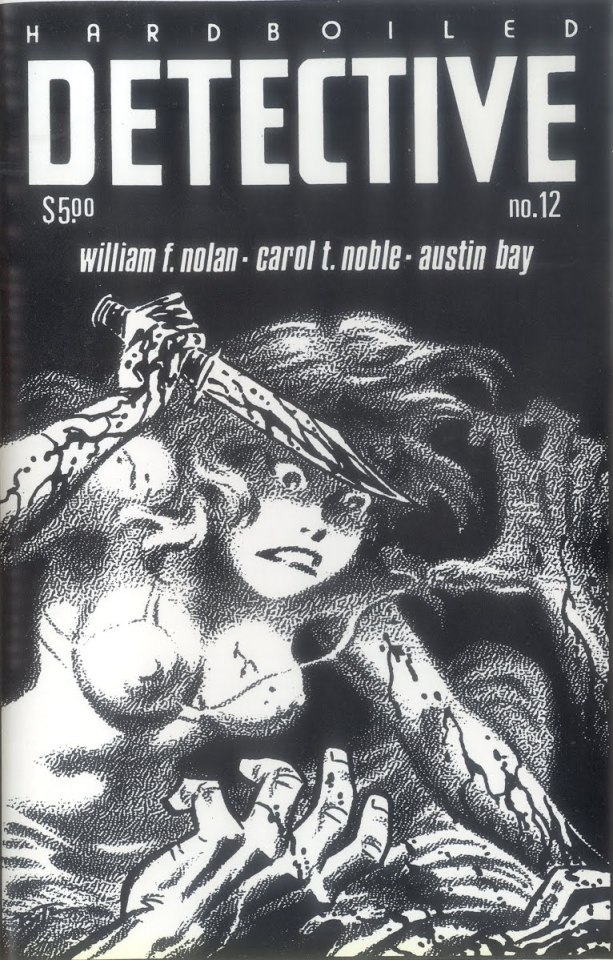
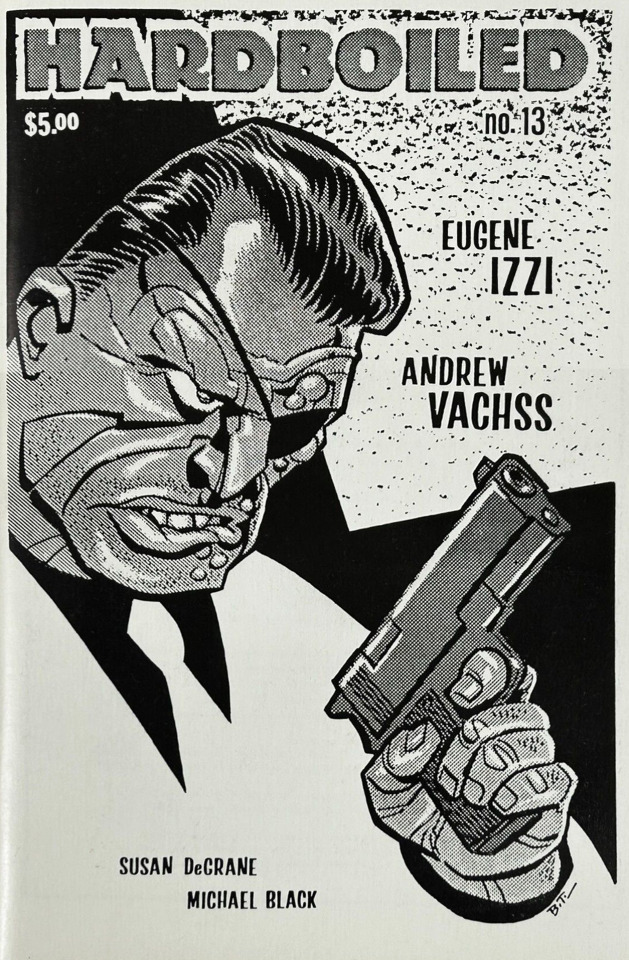
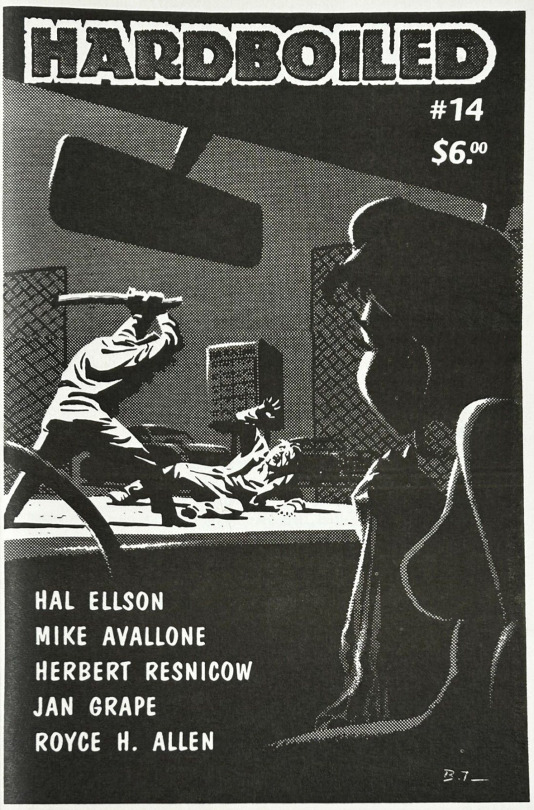
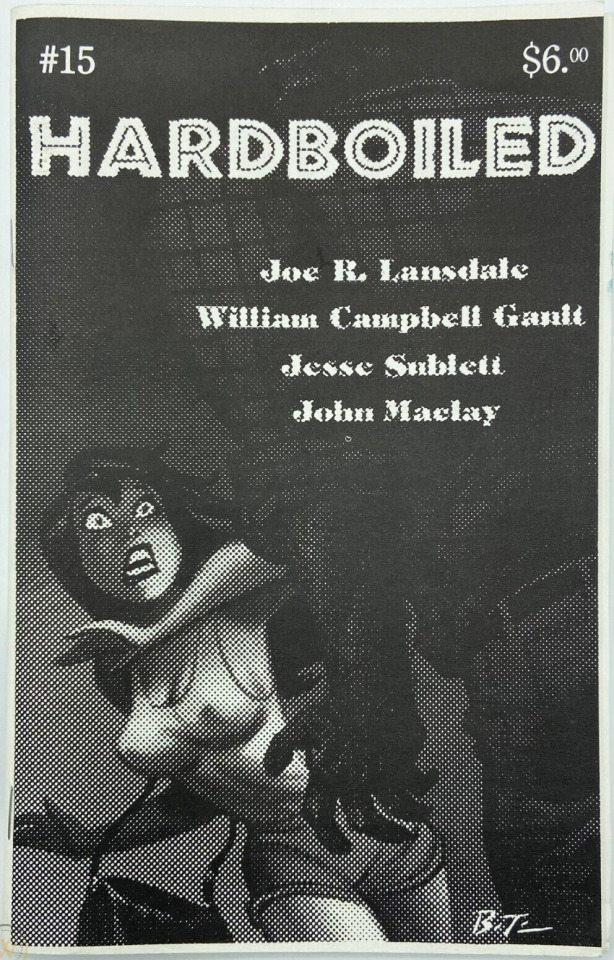
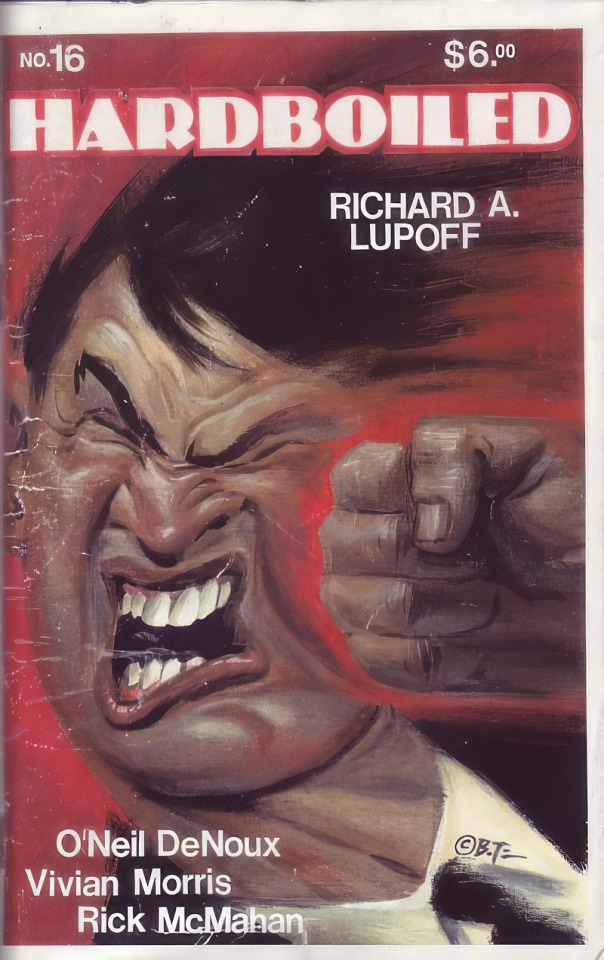

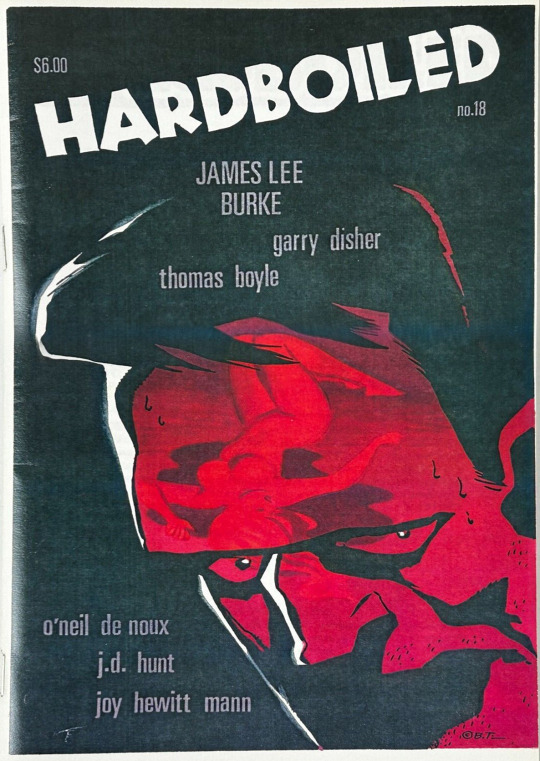
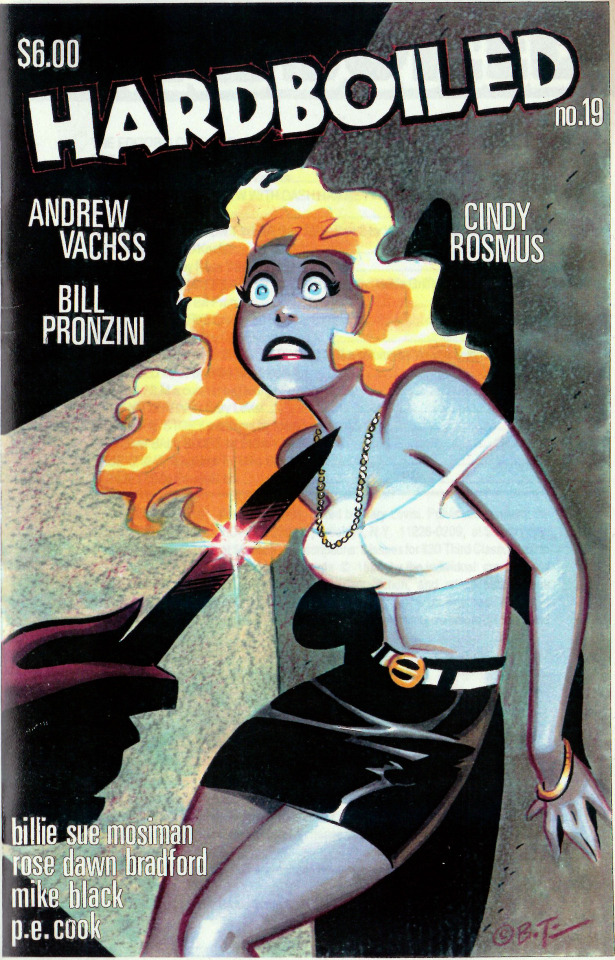
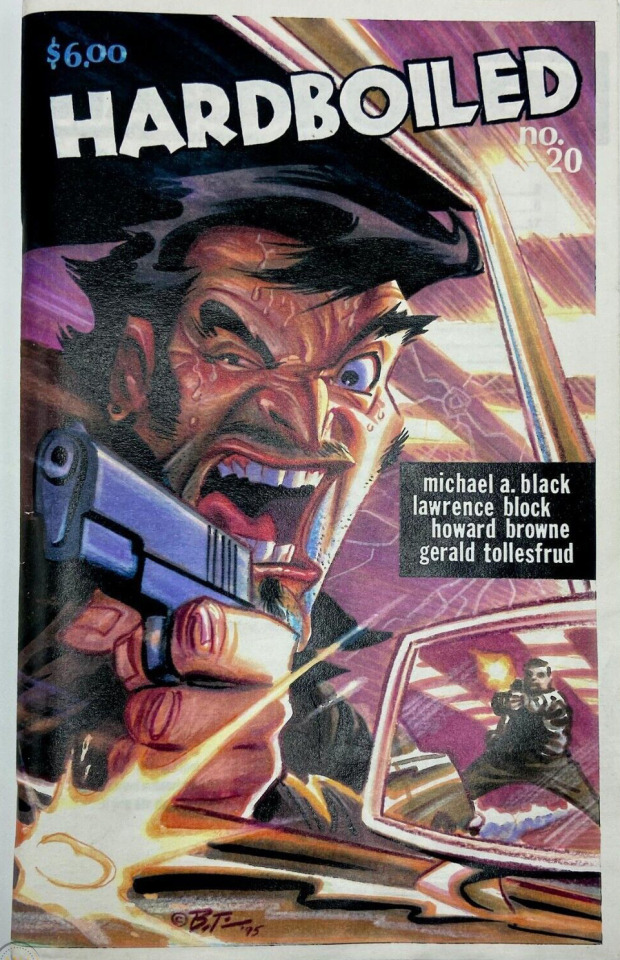
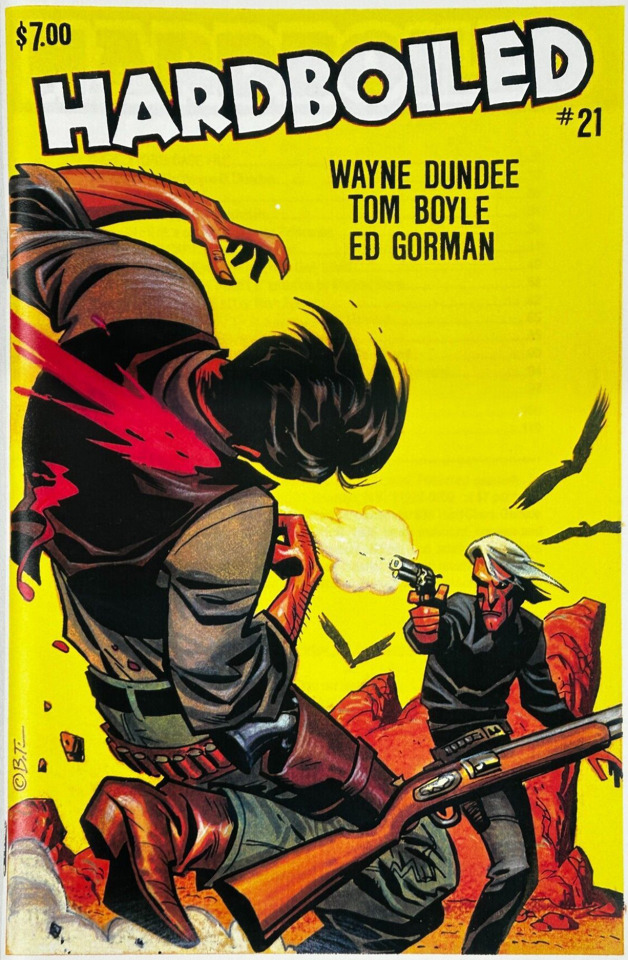
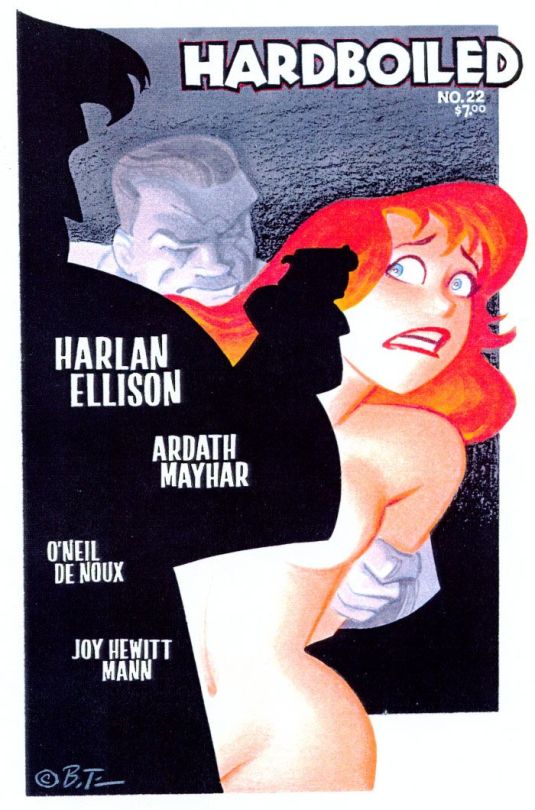
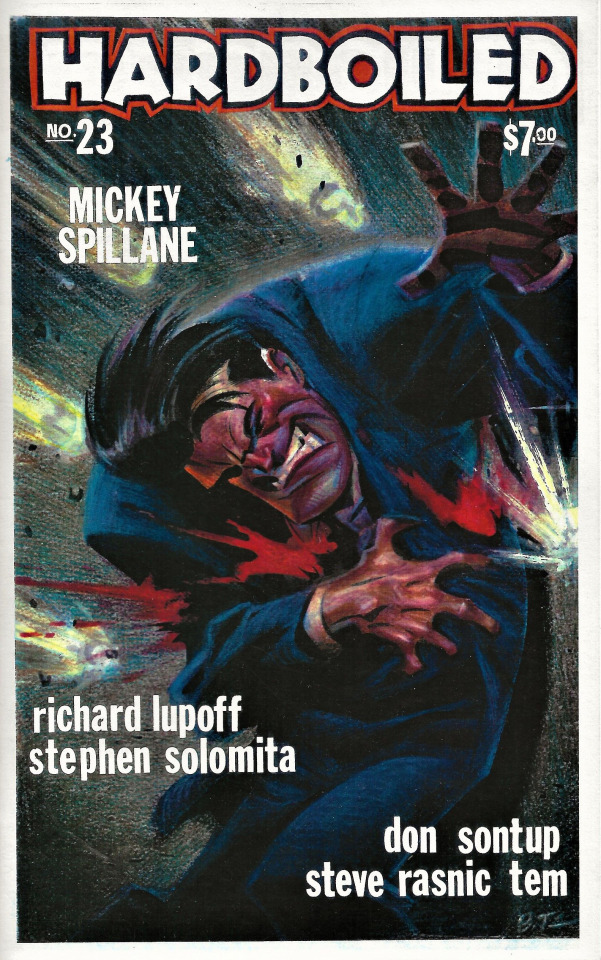
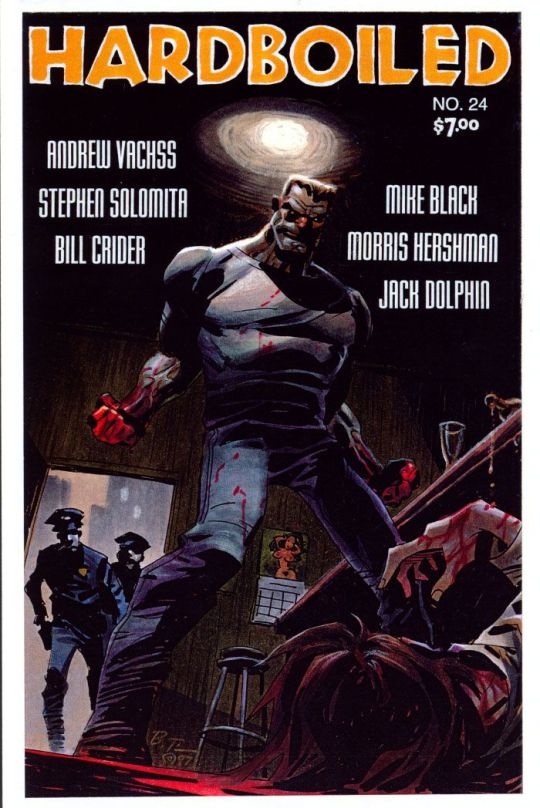
Hardboiled #10-25 (1990-98) cover artwork by Bruce Timm
Interview from Cool Stuff Magazine #1 (1995):
Gary Lovisi: Much of your work is characterized by raw, intense energy and action, or beautiful women in stylish, dangerous settings. Some is obviously influenced by the pulps.
Bruce Timm: I’m big pulp fan, have been since the early 70s, when I started reading Doc Savage and Avenger reprints. I can’t really say how they’ve influenced my artwork much, except when doing pulp-homage stuff like the Bob Price books. But I do sometimes wish I was born decades earlier so I could have worked for some of the old pulps, which was why it was so much fun doing the Price stuff, and the «mock 50s» paperback covers for your Gryphon Books.
The hero pulps — Doc Savage, The Spider, The Shadow, etc — did have a big impact on my approach to the Batman cartoons. It’s something I tried to inject into the show from early on, the atmosphere, danger and illicit excitement, and especially that Norvell Page-type feeling of impending doom — the «doomed city» mood. It’s also why I set the sense in a timeless, 40s-styled world of big cars, padded shoulders, gangsters, shadowy streets, etc. I only wish we’d gone farther with it.
For instance, my original version of Batman himself was actually close to the Shadow: rarely seen close-up, speaking in short, clipped phrases, more mysterious, literally. I wanted to play him cold and remote, almost unhuman. But the network and our various story editors would have none of that! «We need to humanize him», «He needs to have a sense of humor», «We need to more about Bruce Wayne, the person», etc! Whereas I could care less about Bruce Wayne! He’s much more fascinating if you don’t know what he’s thinking, or what drives him.
A few «Shadowy» touches did survive. Batman is rarely seen be the public, almost never on TV. Even when dealing with the police, he’s usually off in shadows conferring with Commissioner Gordon only. And when he’s in the Batcave, he’s almost always in costume. My way of saying he’s Batman, not the other guy, not Bruce Wayne. Like Lamon Cranston, his true, «legal» identity is a facade.
I’ d love to do straight-ahead pulp hero adaptation someday. Doc or The Shadow or The Spider, either in comics or animation, without the senseless updating and over-explaining «character development» like in the Alec Baldwin-Shadow-fiasco-film.
Gary Lovisi: Your stunning covers for my Hardboiled mag are very popular with everyone who sees them. What are your feelings on hardboiled crime-related art?
Bruce Timm: It’s hard, actually, to define «crime-fiction» art. There’s pulp crime-fiction art, and digest crime-fiction art, both of which cross over with paperback crime-fiction art. Basically, I’m a fan of good illustration. Period. Regardless of subject matter. Composition, emotionally intensity, color and lighting effects are what I look for. And pretty girls, of course!
My favorite pulp crime artist is H. J. Ward, hands down. Gorgeous gals in twisty curvy poses, painted in luscious, creamy, wet-on-wet oil technique. My favorite paperback artists include Robert McGinnis, Robert Maguire, and Mitchell Hooks, the usual suspects.
My approach to the Hardboiled covers is different from my earlier «homage» work. When the covers were black and white, I used to experiment with different b&w textures, coquille board, zip-a-tone, xeroxed newsprint, whatever worked. Now that I’m doing them in color, I’m trying to make them as exciting and eye-catching as possible, with loud color, sexy gals, exaggerated action, and simple, graphic, almost cartoony styling.
270 notes
·
View notes
Photo

philsp
January 1940 issue
Arthur Leo Zagat, “Aladdin’s Murder Palace"
Fredric Brown, “Death Is a White Rabbit"
Norvell W. Page, “Dead Hands Can’t Kill!"
Stewart Sterling, “Fuel for Satan’s Fires"
Prentice Lewis, “A Blonde to Die With!"
Seattle Mystery Bookshop
#strange detective mysteries magazine#pulp art#pulp cover#pulp magazine#crime fiction#mystery short stories#hardboiled#arthur leo zagat#fredric brown#norvell w. page#stewart sterling#prentice lewis
9 notes
·
View notes
Note
Have you read the short story Norvell Page wrote as a wedding present for a Big Name Fan about Dick and Nita's first meeting? Any thoughts on it? My main is that Page does not go where you expect him to based on that description.
I did! Actually it was one of the first Spider stories I read. And yeah, to an extent, it's absolutely not what you'd expect from something set in The Spider's world. And on the other hand, it's absolutely what makes the most sense for these two characters. Because, yeah, Norvell Page could have done what he usually does, and written some over-the-top action where Dick and Nita happen to meet during it.
But no, that wouldn't work. Because, for all the turmoil and chaos in The Spider, for everything that he and Nita go through, there are many times when, sturdier even than Dick's resolve is their love for each other, the deep understanding and affection that carries them through hell itself time and time again.
And so, when it was time to showcase how such a romance started, Page wisely deviated from his usual narrative style, and instead told a very, very intimate and personal story, a long and extended conversation between the two, and more importantly, between Page and the reader. Between The Spider, and You, peering into The Spider through the eyes of Nita van Sloan.
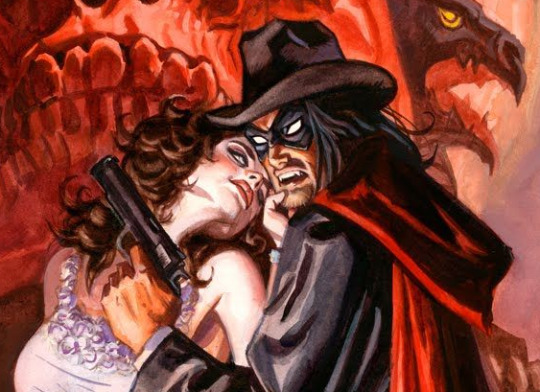
I think for a start, it's an interesting coincidence that this meeting takes place on a cruise ship, and it involves Dick rescuing Nita from suicide. I say this because Margo Lane's first meeting with Lamont Cranston, in the pulps, was stated to have taken place on a cruise ship, and of course, the first time we see The Shadow in the pulps, he's rescuing Harry Vincent from suicide, and both Harry and Margo are The Shadow's main supporting characters. I'm not saying it was intentional, but it's an interesting fact. And more so because Dick doesn't really rescue Nita.
Her scarf whipped in the wind on deck, and it blinded her... and a hand touched her arm, and a voice spoke to her.
"If it's intentional, don't let me stop you," the voice said, "but you're heading straight for suicide."
Nita looked then at the stop toward which, blindly, she was going, and it was a chain barrier beyond which was the sea. And she looked at the man who had stopped her and it was Richard Wentworth. And his words had been a shock to her.
"You wouldn't try to dissuade me from suicide?" she asked.
Wentworth's brows were tilted whit a hint of mockery, but his eyes were very grave. "Every man is master of his own soul, and hence of his body," he said. "And your eyes are wide open and awake. So it would be a considered action. I'm not sure, under those circumstances, that I would have a right to meddle in another's business."
Nita said, "I think you can help me."
Wentworth shook his head. "Only you can help yourself," he said, "but it may be that someone else could help you find the way."
The whole text is a great example of how wonderfully realized of a character Nita van Sloan is in ways so unlike the typical pulp or superhero girlfriends at the time, because the text is written from her perspective, and half of the text reads like an extended character breakdown of who Nita is as a character and person. And the other half of the text is almost entirely comprised of Dick Wentworth spouting philosophy and talking in-depth about his reading of her and what's upsetting her, talking about God and fate and so on. And like so many other attempts to explore serious theological/psychological/philosophical/etc concepts explored through pulp fiction, half of it is bullshit, and half of it is fascinatingly disturbing and thought-provoking bullshit.
"Self-contempt," Wentworth's words were very quiet now. "Is second only to self-pity among the greater sins. Self-analysis is a dangersous thing. You need so much charity. And any person who is advanced enough to think about himself at all is apt to be over-stern in his judgment of himself."
He said to her, "If you don't honor youself, who will honor you?" And, a few moments later, "There is conceit in ruling others, but none in mastering yourself." And, "There is no arrogance so great as self-righteousness."
Nita clashed with him violently, "You are being self-righteous in judging me!"
Wentworth laughed. "I am speaking only truism. It is you who judge yourself, not I." He was serious, then. "My dear," he said, "I would be presumptuous to try to teach you. No man can teach another. But one who has been along that same trail would be less than a man if he failed to mark certain signposts and certain places where there is water to drink so that another, traveling that same road, may know where another struggled and what he has learned. But, as no man can travel a road for another, so no man can teach another. You must work out your own salvation."
"That sense of separation between the inner and outer self," Nita rushed on, "between yourself and the world ... while you were talking, I could almost feel that difference disappearing. The feeling is gone now, but ..."
"All progress is three steps forward and two back," Wentworth said, slowly, "and this is good because thus all ground is three-times covered and triply learned."
And I should probably clarify by this point that, it's not so much Dick Wentworth talking in this story, as it's Norvell Page himself. In fact, he admits as much in another letter he had sent to his readers that he was prone to talking philosophy by this point.
There was a time when the burden of writing just one more Spider seemed too much to undertake. (After all, the magazine is in it's ninth year!) But I never feel that way any more. I know now that the Spider actually does help people; that there are those who appreciate his idealism even though it is expressed in violence.
Especially in the last half dozen Spiders, beginning with the 100th I believe, I have tried very earnestly to teach a little of the philosophy and faith, of which we all need so much in these days.
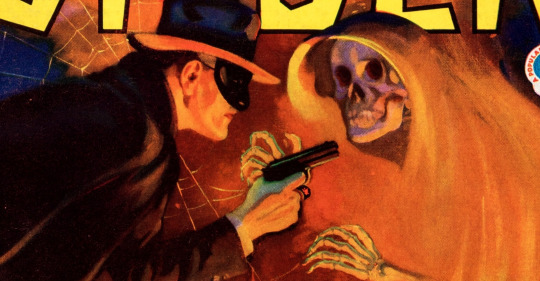
Here's the thing about The Spider: It's not that the character is mad. Well, okay, he IS mad, I don't pull these over-the-top maniacal cartoon meme descriptions out of thin air, but that's because he lives in a batshit insane disaster horror world where there IS no sane response other than joining the carnage to overcome it. It's not just that Wentworth who is a madman. It's that Norvell Page was a mad man, and Dick Wentworth was Norvell's Page alter-ego, by the man's own admission.
Friends have informed me that I moved about the company as one in a trance: there were some who were concerned about my health, so oddly did I behave. Of course, only my body attended that occasion. My mind was entirely engrossed in Dick Wentworth's big problem - back in my study on a sheet of paper stuck in my typewriter
I did not dream that night; in the morning I restlessly paced my floor thinking, thinking, thinking. I sat down at the typewriter, stared at the words and the keys. Suddenly, as if by magic, Dick Wentworth seemed to move of his own volition. My hands raised, my fingers literally flew over the keyboard.
No matter how ridiculous it seems, I will always feel that Dick Wentworth, creature of my own fabrication, guided me through that tough scene.
No two people can live together without being influenced by each other to some extent. So constantly has Wentworth been in my mind, it is as if we were roommates - partners in everything.
Page has talked about how close of a connection he feels to the character, about many ways he's emulated his mannerisms, even some pretty embarassing anectodes where he claims to have "accidentally" used the character's "indomitable will" to scare waiters or drawing connections between The Spider's cast and real people he's met. Others who met him remarked that he talked of the "Spider" characters as though they were members of his family, or drinking companions.
Even before I got into The Spider, I had heard of rumors that he used to present or discuss stories in his office by putting on a cape and jumping from desk to desk, swinging a yard stick in his hand, and I can't find any source that confirms it, but I don't doubt it in the slightest. A lot of pulp writers had really weird lives, and Page was no exception. He was a journalist who frequently dug into his newspaper clippings for grisly stories to incorporate into narratives. I mean, just look at the dude's eyes, he's seen some shit.
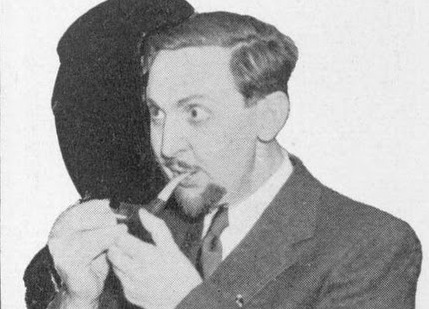
When he was 3, his mother fell down a manhole while they were walking down a Chicago sidewalk. Norvell, terrified, thought she had dissappeared and never quite got over the experience.
When he was a little older, according to some family members, his parents had tickets for the Titanic and escaped disaster when Norvell begged them to cancel the trip for reasons unknown.
Norvell again played a hand in the family's escaping disaster when, one Christmas the family home caught on fire. Candles on the tree had been left burning. He quite arguably saved everyone's life. Waking first, he threw his mattress out of his window, grabbed his infant brother and sister and ran screaming through the hall as he went back to jump to safety. His screams woke his parents who then jumped to the mattress themselves.
Norvell lied about his age and experience to the Norfolk "Observer", claiming to have been writing for Richmond's "Times Dispatch" and was hired there.
His father managed Thomas Edison & Hugo Wurlitzer's ad accounts, and had always encouraged him to write, envisioning him as another Poe, whom his Great-Uncle had worked with as an editor
It is rumored that, in NYC, while at the "World Telegram", he became involved in fellow editor Varion Fry's effort to rescue artists and scientists from occupied Europe. President of the American Fiction Guild, he edited their newsletter for some time. Among his closest friends were fellow writers Ted Tinsley and L. Ron Hubbard and Surrealist painter Max Ernst.
WRITER'S REVIEW 35.08: Norvell W. Page, whose bloodthirsty Spider novels would do justice to Ghengis Khan, demonstrated his bloodlust the other day by accidentally killing a sparrow.
He wrote until 1943, when he abruptly stopped without warning. He dissappeared, for all intents and purposes, from both New York, the arts world and the pulp world for good.
His wife of 20 years, Audrey, had died and this, along with the U.S. involvment in WWII, led to his returning to VA where he would go on to be an intelligence worker in the Truman, Kennedy and Eisenhower Administrations.
He died suddenly of a heart attack in August of 1961.
Surviving family members do not know where he is buried.
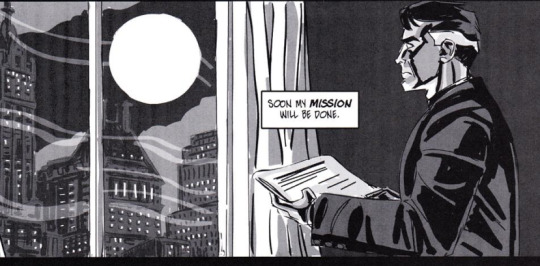
I think this is a story that Page might have told differently had he written it earlier in his career, before he got tired, before he underwent his depression and loss of weight that caused him to briefly stop writing pulps all together, in a time period before the World War had cast an oppressive miasma on the world. In a time period where most of the horrifying nightmares he infused into the stories were really just that, nightmares, that he didn't live long enough to see turn into prophecies.
Because that's another thing about The Spider that makes the character more than just a batshit vigilante: As over-the-top as the stories were, a lot of them also inevitably turned out to predict some form of catastrophe in real life.
Written with an eye to the horrors festering in Germany at the time, The Mayor of Hell now reads as an infernal vision of the Homeland Security Act.
The poisoned products found in The Red Death Rain and The Pain Emperor call to mind the Tylenol killings of the summer of 1982, and the hundreds of poisoned products cases that followed.
Bio-terrorism plays large in the Spider mythos, with bubonic plague in Wings of the Black Death, rabies in The Mad Horde, and cholera in The Cholera King foreshadowing the Anthrax scare of 2001. The same could be said of the terror gases from Kingdom of Doom and Green Globes of Death and the nerve gas attack in the Tokyo subways in March of 1995.
Masters of the Death Madness unfolds as a nightmare meditation upon suicide, which has become one of the principal weapons of modern terrorists. One scene involves suicide bombers.
Another scene chillingly presages the Jonestown massacre of 1978: a grand procession lines up to drink from a bowl of poisoned wine while surrounding gunmen pick off anyone who refuses to drink.
The modern reader will recognize the psychological and sociological effects of a citizenry living under the threat of terrorism, so chillingly evoked by Page: the grating loss of safety, the imminent threats lurking in familiar objects, the way security can no longer be taken for granted, the kind of skittishness that empties a building at the first sign of an unknown white powder.
The eeriest of all the modern terrorist parallels appears in a novel called The City Destroyer, originally published in 1936. It features a set piece involving the collapse of a fictitious gigantic building, supposedly the tallest in New York City, called “The Sky Building.” When it fell, it wiped out five city blocks and claimed 1,000 lives. And perhaps it’s worth noting a further parallel that occurred in the 1970’s, when Pocket Books tried to revive the Spider; they repackaged him in a paperback series, striving for an image of what was then cool and thrusting Richard Wentworth into a contemporary setting.
When Pocket Books reprinted and updated The City Destroyer in 1975, the collapse of the Sky Building was replaced with the collapse of the World Trade Center - Stuart Hopen's essay on The Spider

Regardless of how much reality Page was infusing into his stories (because, again, he took a lot of his material from newspapers) or how much he foresaw intentionally or not, writing The Spider definitely took it's toll on him, and as the magazine neared it's final stretch with him on the helm, certain parts did began taking a more philosophical or religious tone, as more of Page's own beliefs, more of Page's attempts to use it as a vehicle to do good, began to bleed through the page.
And ultimately I think that's also what the story of Dick and Nita's first meeting is about, sort of an extended analysis not just of Nita, who Page himself said was a character he conceived as "the epitome of womanhood" and everything he thought admirable about it, but also of Wentworth's own character, and the things Page wanted to get through in his time.
Religion crept deeper into the series with each succeeding year. By all accounts, Norvell Page was a man of deep faith and spirituality who just happened to be writing the exploits of a hero whose idea of mercy was a bullet in the brain instead of the stomach.
In the 100th novel, Death and The Spider, Wentworth battles Death itself - or so it seems - and on Christmas Eve, he is shot so badly while protecting the President from assassination that everyone believes he's dead - including himself.
Dead or not, he forces himself to fight on, sustained only by reciting the 23rd Psalm over and over again.

Nita laughed and accepted a cigarette. "I don't know how to thank you."
"Don't," Wentworth's voice was sharp. "I told you I am only a channel. Don't confuse me with the Source."
It stopped words on Nita's lips, and it gave here a new respect and a new and sudden attitude toward this man beside her, this man who could laugh and jest with everyone about him, and who could teach like a very oracle ... and who carried about him such a sense of dedication to high purpose. He might seem apart from the world, but he was utterly and completely of it.
Nita said, half-laughing, half-serious, "May I like you? And may I admire your ... adjustment?"
"Don't envy my adjustment," he grinned at her. "Have one yourself." He snapped flame to her cigarette with his lighter, and his lean, strong hand was steady and sure as his eyes, as his voice. He was speaking to her but he was looking at the lighter. "I have found my mission," he said quietly.
#pulp heroes#the spider#nita van sloan#pulp fiction#norvell page#it's pretty much impossible to talk about the spider without sounding like a pulp writer yourself
20 notes
·
View notes
Photo

“Strange Detective Mysteries” January 1941
Blood on the Dragon’s Horn by Norvell W. Page
The Things from Underground by R. S. Lerch
Death Is My Daughter by Henry Kuttner
Case of the Growing Corpse by Stewart Sterling
Beware the Blind Killer by Russell Gray
16 notes
·
View notes
Text
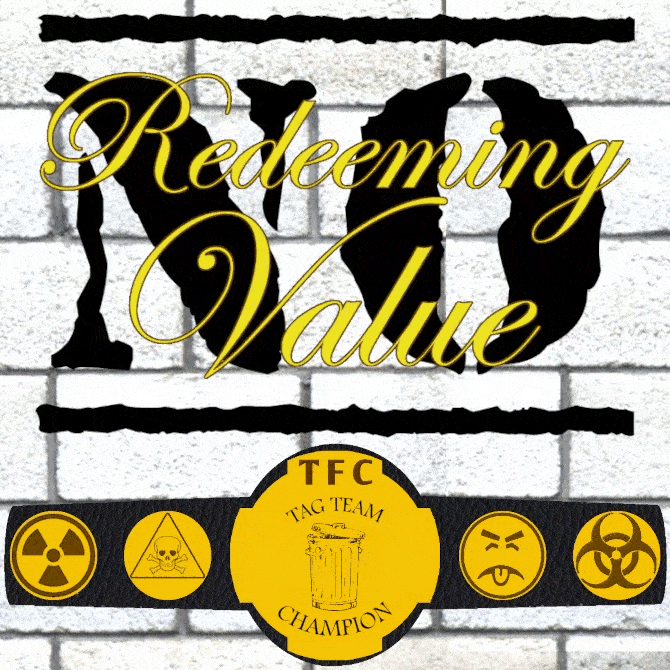
Teen-Age Gangsters (1957)
Smut Peddlers
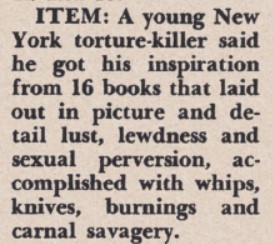
Touches a bit on the whole "smut creates serial killers and rapists" nonsense, but focuses on two molesters and child pornographers - millionaire inventor Ivan Jerome and Charles Guzik, son of gangster Jake "Greasy Thumb" Guzik. Ironically, or appropriately, Teen Age Gangsters is about the smuttiest thing I've read out of the 50s.
Street & Smith's Mystery Magazine (May 1940,v06n01)
Angel's Wings by Norvell Page
A Death Angel story. Angus "Death Angel" Saint-Cloud is a lethal boxer turned PI, here working an insurance case about stolen emeralds. After accusing, and spanking, the thief he's framed for murder and runs around evading the police and a mysterious sniper. This energy works for pulp action, but this is the dumbest mystery I've read, completely nonsensical. Clumsy prose, awkward action, and a chinese stereotype complete with a "no tickee no washee" joke.
Complete Man (February, 1967, v7n01)
"Love Break" Girls: For Office Use Only by Jim Rossi
Prostitution and blackmail rings under the guise of corporate sales training courses. By this point the line between fake exposé and narrative fiction is completely blurred.
Soldier of Fortune (March 1985, v10n03)
Flying the Unfriendly Skies by Dana Drenkowski
El Salvador has an air force.
Startling Detective Adventures (December 1937, v19n113)
Trailing the Crimson Marauders of Monterey by Captain Salvador Arredonda Y Farfan and Murray W. Kramer
Mexican police hunt down a gang who killed an employee in a botched robbery. Unremarkable.
Savage Realms Monthly Volume 1 (January 2021)
The Tomb of Orthun-Rah by David Sims
An adventuring party encounter a pack of venomous giant lizards and the ghost of a sorcerer while raiding an ancient temple for treasure. Manages to make a D&D module feel relatively organic.
Like Playboy, I'm not sure anyone reads Soldier of Fortune for the articles, just the classifieds and gun ads. Soldier of Fortune is eliminated.
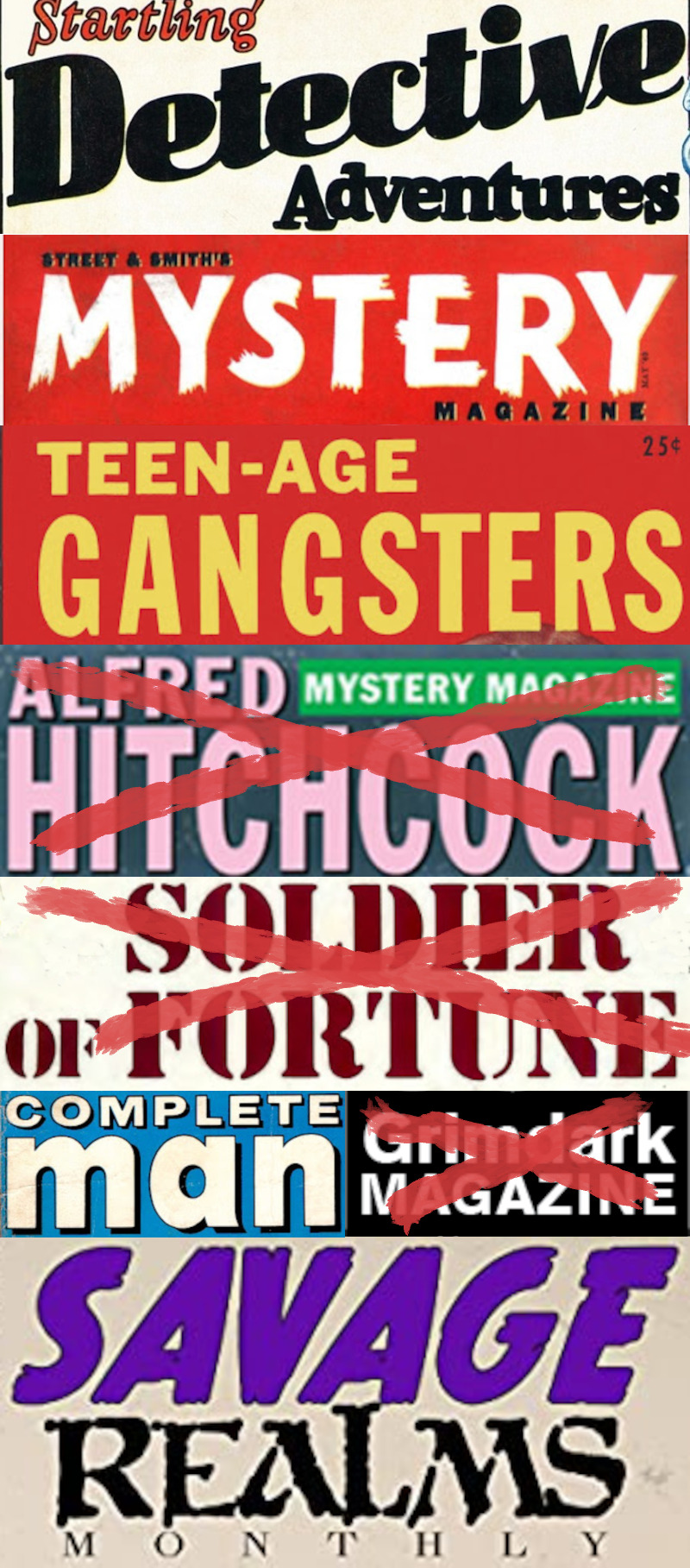
1 note
·
View note
Photo

#ConantheBarbarian #109 (1980) #JohnBuscema Cover, John Buscema Pencils, #RoyThomas Story, Great Bear of Heaven / Heaven Bear / God of Bears (First appearance) "Sons of the Bear God!" This issue is the beginning of the adaptation of the novel Sons of the Bear God by Norvell W. Page. https://www.amazon.com/gp/product/B07YVP4XT9
0 notes
Photo

Crime Busters [Vol. I No. 1, November 1937] (Street & Smith Publications, Inc., 10¢, pulp) 8 · White Elephant [Carrie Cashin] · Theodore Tinsley · ss 24 · Talking Toad [Clickell Rush (The Gadget Man)] · Lester Dent · ss 40 · Death’s Ruby [Dick Barrett] · Norvell W. Page · ss 58 · Mail-Order Busters [Bimbo & Howdy] · Clifford Goodrich · ss 74 · Norgil [Norgil the Magician] · Maxwell Grant (by Walter B. Gibson) · ss 88 · Odds on Murder [Arlen Canfield (The Spinner)] · Steve Fisher · ss 100 · “Boxcar” Wrecks ’Em [Boxcar Reilly] · Laurence Donovan · ss 116 · One for the Book · James Perley Hughes · ss https://www.ebay.com/itm/144059845273 #pulps #pulpfiction #crimebusters #detectivepulps #norvellpage #norvellwpage #lesterdent #maxwellgrant #stevefisher #laurencedonovan #jamesperleyhughes #theodoretinsley #docsavage #pulpheroes #pulpsuperheroes #thespider #theavenger #theshadow #GrantStockbridge #RTMScott #WalterBGibson #KennethRobeson #hardboiled #hardboileddetective #norgil #norgilthemagician #dickbarrett #thegadgetman #clickellrush #pulp (at Portland, Oregon) https://www.instagram.com/p/CPwwoUdBhPb/?utm_medium=tumblr
#pulps#pulpfiction#crimebusters#detectivepulps#norvellpage#norvellwpage#lesterdent#maxwellgrant#stevefisher#laurencedonovan#jamesperleyhughes#theodoretinsley#docsavage#pulpheroes#pulpsuperheroes#thespider#theavenger#theshadow#grantstockbridge#rtmscott#walterbgibson#kennethrobeson#hardboiled#hardboileddetective#norgil#norgilthemagician#dickbarrett#thegadgetman#clickellrush#pulp
1 note
·
View note
Text
Revisiting: The Spicies
This article was originally posted on 1 December, 2018 as “A Peep at The Spicy Pulps”. Next week, we’ll return to normal with a quartet of reviewed new releases, including the newest offerings in Fenton Wood’s Yankee Republic series and Larry Correia’s Saga of the Forgotten Warrior.
Last week, we examined how Martin Goodman, future publisher of Marvel Comics, combined science fiction with the popular “Spicy” genre to bring renewed interest to science fiction, fueling the first science fiction boom in the late 1930s. This would not be the only time the Spicies would shape the future of the pulp market. What once were stories intended to feature sexual content without obscenity soon turned into the salacious tales of sin and sadism of weird menace, the loss of the children’s market to comics, and government censorship of the pulps.
Between 1929 and 1934, many publishers, from the pornographic to the mainstream, were experimenting with ways to bring the spice of sex to popular fiction. Everything from toned-down porn to bad girl romances was tried, with the actual act disappearing behind the editor’s ellipse, leaving details to the imagination. But none lasted for more than a handful of issues until 1934’s Spicy Detective Stories sold out. Soon, a number of copycats followed suit, including Spicy Adventure, Saucy, and Spicy Mystery Stories, the last of which birthed weird menace.
The Spicy tale charted a perilous course between mainstream respectability and the thrill of sex. Anatomical descriptions were out, as was complete nudity and any details of the act the heroine submitted to. The women could disrobe voluntarily or have their clothes torn from them, but some scrap of cloth had to remain. The idea was to have a strong sexual element without being obscene or vulgar. After all, government investigation would reveal just who bankrolled these magazines, and the Mob did not want the attention.
That said, many of today’s YA stories, light novels, and romance novels would be too explicit for the Spicies.
But with (the barest hint of) sex selling, the rest of the story not surprisingly fell by the wayside. Many of the spicies chose exotic settings as to offer more convincing opportunities for the ladies to be in undress. Unfortunately, the exotic settings and plots don’t compare to the descriptions found in the hero pulps and Weird Tales. Everything was a thin excuse to get to the ellipses, where the real action occurred in the readers’ minds. As a result, the combination of thin story and muted thrills led The Blood ‘N’ Thunder Guide to Pulp Fiction to declare of the Spicies, “Read one, you’ve read them all.” However, it took about five years for pulp fiction readers to agree.
The Spicies remained popular with authors is because they PAID. Not just on time, which was a novelty for many pulp magazines, but well–as in 5 cents a word at a time where 1 cent a word was professional rate. Many respectable pulpsters could not resist this lucrative market, including Norvell Page. Guess how many of those were Weird Tales authors. At least the Spicies paid, which wasn’t always the case with Weird Tales under Farnsworth Wright. R.E. Howard appeared under the pseudonym Sam Walser, Jack Williamson, as Nils O. Sonderlund, and E. Hoffman Price and Henry Kuttner used their own names.
That said, the rest of the field wasn’t quite up to the Weird Tales quality. In a genre limited to innuendo and indirect description of undress, only a score of authors could write within the rules. The catch was being able to write suggestively without resorting to tab A into slot B depictions of the act, and few could deliver.
To no surprise, with the restrictions of the Spicies compare to outright girlie or “smoosh” magazines such as Stage and Screen Stories and Tattle Tales, which both featured far more revealing covers, writers made up for lack of titillation with a penchant for peril, which became impending torture, which became weird menace. Afterwards, the Spicies burned out as stronger thrills and more explicit images became easier to acquire. But for five years, the Spicy was queen.
Now, to tie this back into science fiction, and the main concern of the Castalia House blog, the Spicy tale did leave an imprint on the development of the genre. Even as early as the 1930s, science fiction strove for respectability. During the Campbelline Revolution, Jack Williamson recounts that”science fiction had to be pure as snow”. Isaac Asimov was scathing of Marvel Science Stories:
“For some half a dozen issues or so, a magazine I won’t name published “spicy” stories about “the hot passion of alien monsters for Earthwomen. Clothes were always getting ripped off and breasts were described in a variety of elliptical phrases” for its “few readers” before “the magazine died a deserved death.”
And the censors in place after weird menace’s fall kept sexual content out of Amazing, Astounding, and their competitors. Or as much as possible, for:
It became a grim or frivolous game for some of the writers who were, of course, not fools, to see what they could slip by without editorial knowledge or consent. One famously was able to get through J. W. Campbell and Kay Tarrant a description of a tomcat as a “ball-bearing mousetrap” and Asimov’s 1951 “Hostess” in Galaxy reeked of the perversity of sexual attraction between an alien diplomat and a repressed academic’s wife but these triumphs were few and, more to the point, unnoticed. If they had attracted wide attention, the writers would have paid the price.
(Malzberg, Barry N.. Breakfast in the Ruins (Kindle Locations 523-528). Baen Books.)
Barry Malzberg further explains in Breakfast in the Ruins that “as late as 1965, science fiction was still a genre which in the main denied the existence, let alone the extent, of human sexuality” and that it wasn’t until “the beginning of the nineteen-seventies, [that] novels of great or relative explicitness (Silverberg’s Dying Inside, The Second Trip, and The World Inside, my own Beyond Apollo) bore the label of category science fiction.”
In short, fan backlash against the Spicies and government backlash against the daughter of the Spicies known as weird menace removed sex as a topic of science fiction for over thirty years, until the rise of the New Wave.
Revisiting: The Spicies published first on https://sixchexus.weebly.com/
0 notes
Text
A Peep at the Spicy Pulps
Last week, we examined how Martin Goodman, future publisher of Marvel Comics, combined science fiction with the popular “Spicy” genre to bring renewed interest to science fiction, fueling the first science fiction boom in the late 1930s. This would not be the only time the Spicies would shape the future of the pulp market. What once were stories intended to feature sexual content without obscenity soon turned into the salacious tales of sin and sadism of weird menace, the loss of the children’s market to comics, and government censorship of the pulps.
Between 1929 and 1934, many publishers, from the pornographic to the mainstream, were experimenting with ways to bring the spice of sex to popular fiction. Everything from toned-down porn to bad girl romances was tried, with the actual act disappearing behind the editor’s ellipse, leaving details to the imagination. But none lasted for more than a handful of issues until 1934’s Spicy Detective Stories sold out. Soon, a number of copycats followed suit, including Spicy Adventure, Saucy, and Spicy Mystery Stories, the last of which birthed weird menace.
The Spicy tale charted a perilous course between mainstream respectability and the thrill of sex. Anatomical descriptions were out, as was complete nudity and any details of the act the heroine submitted to. The women could disrobe voluntarily or have their clothes torn from them, but some scrap of cloth had to remain. The idea was to have a strong sexual element without being obscene or vulgar. After all, government investigation would reveal just who bankrolled these magazines, and the Mob did not want the attention.
That said, many of today’s YA stories, light novels, and romance novels would be too explicit for the Spicies.
But with (the barest hint of) sex selling, the rest of the story not surprisingly fell by the wayside. Many of the spicies chose exotic settings as to offer more convincing opportunities for the ladies to be in undress. Unfortunately, the exotic settings and plots don’t compare to the descriptions found in the hero pulps and Weird Tales. Everything was a thin excuse to get to the ellipses, where the real action occurred in the readers’ minds. As a result, the combination of thin story and muted thrills led The Blood ‘N’ Thunder Guide to Pulp Fiction to declare of the Spicies, “Read one, you’ve read them all.” However, it took about five years for pulp fiction readers to agree.
The Spicies remained popular with authors is because they PAID. Not just on time, which was a novelty for many pulp magazines, but well–as in 5 cents a word at a time where 1 cent a word was professional rate. Many respectable pulpsters could not resist this lucrative market, including Norvell Page. Guess how many of those were Weird Tales authors. At least the Spicies paid, which wasn’t always the case with Weird Tales under Farnsworth Wright. R.E. Howard appeared under the pseudonym Sam Walser, Jack Williamson, as Nils O. Sonderlund, and E. Hoffman Price and Henry Kuttner used their own names.
That said, the rest of the field wasn’t quite up to the Weird Tales quality. In a genre limited to innuendo and indirect description of undress, only a score of authors could write within the rules. The catch was being able to write suggestively without resorting to tab A into slot B depictions of the act, and few could deliver.
To no surprise, with the restrictions of the Spicies compare to outright girlie or “smoosh” magazines such as Stage and Screen Stories and Tattle Tales, which both featured far more revealing covers, writers made up for lack of titillation with a penchant for peril, which became impending torture, which became weird menace. Afterwards, the Spicies burned out as stronger thrills and more explicit images became easier to acquire. But for five years, the Spicy was queen.
Now, to tie this back into science fiction, and the main concern of the Castalia House blog, the Spicy tale did leave an imprint on the development of the genre. Even as early as the 1930s, science fiction strove for respectability. During the Campbelline Revolution, Jack Williamson recounts that”science fiction had to be pure as snow”. Isaac Asimov was scathing of Marvel Science Stories:
“For some half a dozen issues or so, a magazine I won’t name” published “spicy” stories about “the hot passion of alien monsters for Earthwomen. Clothes were always getting ripped off and breasts were described in a variety of elliptical phrases” for its “few readers” before “the magazine died a deserved death.”
And the censors in place after weird menace’s fall kept sexual content out of Amazing, Astounding, and their competitors. Or as much as possible, for:
It became a grim or frivolous game for some of the writers who were, of course, not fools, to see what they could slip by without editorial knowledge or consent. One famously was able to get through J. W. Campbell and Kay Tarrant a description of a tomcat as a “ball-bearing mousetrap” and Asimov’s 1951 “Hostess” in Galaxy reeked of the perversity of sexual attraction between an alien diplomat and a repressed academic’s wife but these triumphs were few and, more to the point, unnoticed. If they had attracted wide attention, the writers would have paid the price. (Malzberg, Barry N.. Breakfast in the Ruins (Kindle Locations 523-528). Baen Books.)
Barry Malzberg further explains in Breakfast in the Ruins that “as late as 1965, science fiction was still a genre which in the main denied the existence, let alone the extent, of human sexuality” and that it wasn’t until “the beginning of the nineteen-seventies, [that] novels of great or relative explicitness (Silverberg’s Dying Inside, The Second Trip, and The World Inside, my own Beyond Apollo) bore the label of category science fiction.”
In short, fan backlash against the Spicies and government backlash against the daughter of the Spicies known as weird menace removed sex as a topic of science fiction for over thirty years, until the rise of the New Wave.
A Peep at the Spicy Pulps published first on https://medium.com/@ReloadedPCGames
0 notes
Photo

The Death Angel in Crime Busters by Norvell W. Page, 1938.
The Death Angel was ex-boxer Angus Saint-Cloud who became a freelance crime buster because yeah sure why not?
9 notes
·
View notes
Photo

philsp.com
September-October 1936 issue
Paul Ernst, “Hell’s Straw Boss"
Arthur Leo Zagat, “Hero’s Understudy"
W. Wirt, “Federal Feudists"
Charles Molyneux Brown, “Substitute Cracksman"
Emile C. Tepperman, “Revolt of a G-Man"
Emerson Graves, “Kill That G-Man"
Norvell W. Page, “The City Ruled by Murder"
Seattle Mystery Bookshop
#ace g-men stories magazine#pulp art#pulp cover#pulp magazine#hardboiled#feds#crime fiction#mystery short stories#paul ernst#arthur leo zagat#w. wirt#charles molyneux brown#emile c. tepperman#emersone graves#norvell w. page#tommygun
6 notes
·
View notes
Photo

philsp
August 1933 issue
cover art by J. George Janes?
Lester Dent, “The Skeleton’s Clutch” (Lee Nace/The Blond Adder)
Paul Chadwick, “Tentacles of Doom” (Wade Hammond)
Cliff Howe (Lester Dent), “A Corpse’s Code
Norvell Page, “Statues of Horror" (Ken Carter)
Carl McKinnon Saunders, “The Key to Hell” (John Murdock)
Hugh Russell, “A Steerful Little Earful"
Frederick C. Davis, “Moon Wizard” (Steve Thatcher/The Moon Man)
Ralph W. Andrews, “The Klausman System"
Lew Allen Bird, “Double-Barreled Guilt"
Ralph Andre, “The Expert Fixer” (Robert Corliss)
Seattle Mystery Bookshop
#ten detective aces magazine#pulp art#pulp cover#pulp magazine#j. george janes#crime fiction#mystery short stories#hardboiled#lester dent#paul chadwick#cliff howe#norvell page#carl mckinnon saunders#hugh russell#frederick c. davis#ralph w. andrews#lew allen bird#ralph andre
7 notes
·
View notes
Photo

“Dime Mystery Magazine” v3 #3, October 1933 cover by Walter M. Baumhofer
The Dance of the Skeletons by Norvell W. Page
The Monster in the Dark by John H. Knox
The Graveless Dead by Hugh B. Cave
Gate of the Two Coffins by Robert C. Blackmon
Snake-Man by Franklin Martin
The Murderer of Many Names by Edgar Wallace
4 notes
·
View notes
Photo

ebay
April 1933 issue
cover art by J. W. Schlaikjer
~ Erle Stanley Gardner, “Chinatown Murder”, 49th of 73 Ed Jenkins stories, ‘Chinese frequently spoken’, 70th of 99 stories in BM
~ Frederick L. Nebel, “Farewell to Crime”, 21th of 37 with Captain Steve MacBride and local reporter Kennedy, reprinted in Winter Kill: Complete Cases of MacBride & Kennedy, v.3 (Altus, 2013), 46 of 67 stories in BM
~ Norvell Page, “Black Harvest”, 'last of 3 Jules Tremaine stories; Manhattan and Little Italy; (ed. note) a projected & potentially important series that never developed’ [Hagemann doesn’t explain his editor’s note], only these 3 stories in BM
~ William Rollins, Jr., “K.O. and the Killers”, 3rd of 4 stories with ‘Kenneth Osborne from ‘No’th Cah’lina’; 1st person narrator’, 20th of 23 stories in BM
~ H.H. Stinson, “Give the Man Rope”, 1st of 14 with ‘Ken O’Hara, fighting reporter on Los Angeles Tribune’, debut and 1st of 27 stories in BM
~ Roger Torrey, “The Case-Hardened Samaritan”, 2nd of 11 with Dal Prentice, Magna City police dick, ‘one tough guy’, ‘Prentice – “hard when it comes to handling killers”, 3rd of 50 appearances in BM
©Seattle Mystery Bookshop
#black mask magazine#pulp art#pulp cover#pulp magazine#j.w. schlaikjer#crime fiction#mystery short stories#hardboiled#private eye#private detective#roger torrey#h.h. stinson#williams rollins jr.#norvell page#frederick nebel#steve macbride#erle stanley gardner#ed jenkins
9 notes
·
View notes
Photo

philps.com
December 1938 issue
Norvell W. Page, “Murder Follows the Headlines"
Ward Hawkins, “Death’s Broken Glasses"
Norbert Davis, “My Client, the Corpse"
Ray Cummings, “The Dead Girl Screamed” (Melvin Cone)
Wyatt Blassingame, “Open Season on Dead Men” (Joe Fall)
Denslow M. Dade, “Flowers of Crime"
George Armin Shaftel, “Third Degree Killer"
Cyril Plunkett, “Bullet Promotion"
Anonymous, “Oddities in Crime"
Herman Landon, “Installment-Plan Death” (Stanley Garvian)
Seattle Mystery Bookshop
#detective tales#pulp art#pulp cover#pulp magazine#norvell w. page#ward hawkins#norbert davis#ray cummings#wyatt blassingame#denslow m. dade#george armin shaftel#cyril plunkett#herman landon
20 notes
·
View notes
Photo

philsp.com
Feb 1940
cover art by James Lewis
Seattle Mystery Bookshop
#frank gruber#cyril plunkett#norvell w. page#clues detecitve stories magazine#clues detective stories#crime fiction#mystery short stories#pulp art#pulp cover#pulp magazine#james lewis
5 notes
·
View notes